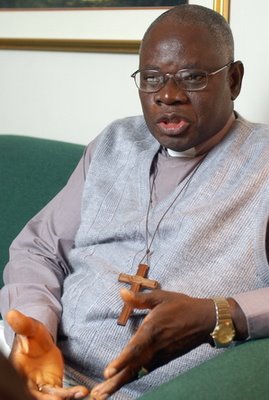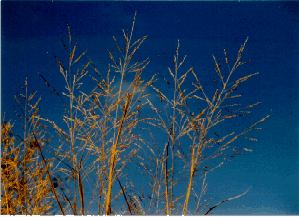 Mexican President Felipe Calderon waves after being sworn in at the National Congress during his inauguration ceremony amidst a congress partially seized by lawmakers who tried unsuccessfully to block his swearing in ceremony in Mexico City on Friday Dec. 1, 2006. Image Credit: AP Photo/Dario Lopez-Mills
Mexican President Felipe Calderon waves after being sworn in at the National Congress during his inauguration ceremony amidst a congress partially seized by lawmakers who tried unsuccessfully to block his swearing in ceremony in Mexico City on Friday Dec. 1, 2006. Image Credit: AP Photo/Dario Lopez-MillsHope Begins For A Stable Southern Border
After a pushing-and-shoving match between Mexico's politicitians at the National Congress, Felipe Calderon was sworn in as President of Mexico.
Problem is, his people are still flooding into the United States in massive numbers while our government has no stomach for funding and building the recently approved border fence.
Further, Mexican Nationals here complain that the elections were stolen and that many do not respect the rule of law while they, themselves, reside here illegally. They could have stayed home and voted, OH!, OH! ... and built an economy and culture that worked as opposed to trying to remake our economy and culture after their own image!
Here are two perspectives at the beginning of the Calderon era. Let us all hope for the best.
Excerpts from the CanWest News Service -
Mexican President sworn in at raucous ceremony
April Lindgren, CanWest News Service - Published: Saturday, December 02, 2006
MEXICO CITY -- Mexico's new president was sworn into office Friday in a brief ceremony that interrupted a morning of intermittent brawling between his supporters and opponents in the national congress.
Even as his political enemies in the congress screamed "get out" and blew whistles, Felipe Calderon swore the oath of allegiance and accepted the presidential sash from outgoing president Vicente Fox as international dignitaries, including Prime Minister Stephen Harper, watched from an upper balcony in Mexico's house of representatives.
Leftist legislators who insist Calderon fraudulently stole the country's July 2 election from their candidate, Andres Manuel Lopez Obrador, vowed to prevent his inauguration before congress.
Earlier in the morning, lawmakers from the two opposing camps threw chairs and fists at each other as supporters of Lopez Obrador tried to erect barricades and block Calderon's arrival. The swearing in lasted less than 10 minutes and Calderon had to save his inaugural speech, traditionally delivered by new presidents to the congress, for later in the day when he addressed political supporters in the National Auditorium.
Prime Minister Stephen Harper, who witnessed several scuffles amongst Mexican legislators in the moments before the ceremony in the congress began, described the scene as "interesting."
"Our Parliament is tame after all," the prime minister said on his way out of the congress. Harper was joined in the balcony by other heads of state from Central and South American as well as George W. Bush, father of the current U.S. president.
Harper and Bush, who led the American delegation, stopped to chat informally for a few moments after the inauguration.
----
Mexicans have been deeply divided over the country's political future since Lopez Obrador lost last summer's election by less than one per cent of the vote.
The former mayor of Mexico City refuses to concede defeat and has orchestrated mass street demonstration in support of his cause. Earlier this month he held his own inauguration ceremony where he declared himself president.
Early Friday morning thousands of supporters of AMLO, as he is popularly known, streamed into the city's main downtown square to hear their "president" speak.
Carrying placards proclaiming Lopez Obrador the country's legitimate president and shouting "Felipe, understand, the country doesn't want you," the protesters vowed to continue the fight well beyond Friday's inauguration.
"We don't recognize Calderon as president -- we know there was electoral fraud," said 23yearold university student Carla Gusman. "We will continue this resistance. It will be a constant fight so they don't sell off Pemex (the national oil company) and other things we need to keep. We won't let them sell off our heritage. We won't let them continue with their repression."
Mario Arturo Garcia Soreano, a 54 yearold auto mechanic, worried the continuing protests will result in a crackdown by the government.
"The government, it always turns to violence. But for our part, it will be a battle of ideas not arms."
In his speech, Lopez Obrador urged his followers to avoid violence "because the support of the people and our moral authority will be enough to triumph."
----
Inside the building, Calderon vowed to be a president for all Mexicans and to heal the country's deep political divisions.
"To those who voted for me, I welcome their support to those who didn't I say I won't ignore the reasons for that and I will work to earn your confidence," he told thousands.
Calderon, a 44yearold lawyer, career politician and former energy minister, reiterated his determination to deal with the drug violence that has killed more than 3,000 people in the last two years and promised to cut back lavish salaries for senior public officials.
He also insisted encouraging more private investment will generate jobs to alleviate the grinding poverty that affects half of all Mexicans.
----
Francois Prudhomme, a professor at El Colegio de Mexico, predicted Lopez Obrador won't abandon his campaign against Calderon's legitimacy any time soon.
"The left have been trying to create a situation where he is viewed as a very, very weak president who cannot govern."Read All>>
And this reaction from Mexican nationals living in San Francisco's bay area.
Excerpts from the San Francisco Chronicle -
Local Mexicans weigh in on 'circus' south of the border
Tyche Hendricks, Chronicle Staff Writer - Saturday, December 2, 2006
Mexican residents around the Bay Area watched the tense inauguration of Mexico's new President Felipe Calderon with sadness and frustration Friday, some expressing disgust that Calderon prevailed in what they called a stolen election, others dismayed by the fisticuffs and jeers as opposition lawmakers tried to impede the swearing-in ceremony.
Many Mexicans who have kept an eye on the politics of their home country from here said they thought a combination of dirty campaigning and vote fraud had denied the presidency to leftist candidate Andres Manuel Lopez Obrador, who lost the election by less than 1 percent. But some said it was time for Lopez Obrador to give up his protest campaign and concede.
"Everyone's fighting -- they're not respecting the law or the institutions of government," said Roberto Guillen, a Novato restaurateur. "Lopez Obrador should accept that Felipe is president and work with him. Otherwise we'll have chaos. The country has been doing pretty well, but investors will stay away if Mexico can't govern itself."
Others disagreed, saying the protests by members of Lopez Obrador's Democratic Revolution Party, both in the streets and in the congressional chamber, are the only way to demand an end to corruption and focus on the needs of the poor.
"It's a form of protest that they're not in agreement with what is happening," said San Jose photographer Mateo Gutierrez. "Lopez Obrador deserved to win, but now the government will continue with corruption."
Miguel Araujo, a dual citizen and longtime immigrant rights activist who owns a San Bruno taqueria, said Calderon, of the conservative National Action Party, had usurped power.
"It's hard to see how things can change unless Calderon wants a change, but if he does, why did he bring those people into his Cabinet?" said Araujo, criticizing the new president's conservative choices. "The Mexican people may get so fed up with being cheated and lied to that they start a revolution. I see in Mexico a very big risk."
Some local Mexicans saw the bedlam surrounding the swearing-in ceremony as an embarrassment to the country.
"The international world sees it as something ridiculous," said Rosario Chacon, who is working toward her MBA at Mills College in Oakland. "It shows that the politicians don't know how to solve their problems peacefully. I think we need more women there. They have a little more tact, more diplomacy."
----
"The first time I voted, I saw the PRI bring truckloads of people in from the countryside and give them two pounds of tortillas for their votes," she said [Silvia San Miguel, an executive assistant for the city of Oakland]
. "You don't see that anymore. I don't hope for perfection. I hope for fairness. And it is getting there." Read All>>
Judging by the reactions sampled in the "Bay Area", if the Mexican government cracks down in order to maintain civil order, the leftist Mexican Nationals will begin a new tidal wave of illegal immigration. They may actually be coming to a safe haven if the goals of our new congress are allowed to go uncontested and unchecked.

 Egypt - A country that is geographically located to be a major route for migratory birds and one of the nation states worst hit by the virus outside Asia. Image Credit: BBC NEWS
Egypt - A country that is geographically located to be a major route for migratory birds and one of the nation states worst hit by the virus outside Asia. Image Credit: BBC NEWS















